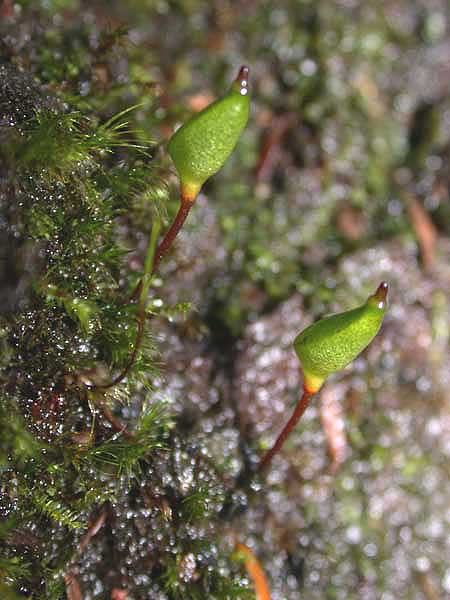


Welcome to the wonderful world of bryology!
 |
|
Buxbaumia piperi
|
Biology 321 Course Website
This
website was initiated by members of the Biology 321 class of 2001.
The
following students were major participants in its development (imaging, text,
and web):
William Bae
Gina Choe
Kim Ryall
Wynne Miles
Nitin Verma
(although not in the course helped out with technical parts of the website)
The
students of Biology 321 continue to contribute images and comments.
We would like to express our gratitude to
the contributions of Kent Brothers who allowed us to use a number of his images.
This site was created using Macromedia Dreamweaver, Macromedia Fireworks and Adobe Photoshop. Photographs in the Picture Gallery were taken with Nikon Coolpix 990 and 995 digital cameras and Nikon microscopes. Scanning Electron Microscopy was done at the Biology Electron Microscopy Lab at the University of BC.
Works consulted
Conrad, H.S. and Redfearn, P.L. 1979. How to Know the Mosses and Liverworts. WM. C. Brown Company Publishers, Iowa.
Crum, H. 2001. Structural Diversity of Bryophytes. University of Michigan Herbarium, Michigan.
Crum, H. 1984. North American Flora - Sphagnopsida, Sphagnaceae. New York Botanical Garden, New York.
Lawton, E. 1971. Moss Flora of the Pacific Northwest. Hattori Botanical Laboratory, Japan.
Schofield, W.B. 2002. Field Guide to Liverwort Genera of Pacific North America. Global Foreat, University of Washington Press, Seattle.
Schofield, W.B. 1992. Some Common Mosses of British Columbia. Royal British Columbia Museum, Victoria.
Schofield, W.B. 1985. Introduction to Bryology. Balckburn Press, New Jersey.
So what are bryophytes?
Bryophytes are mosses, liverworts and hornworts. They are an ancient and diverse group of non-vascular plants. Bryophytes tend to escape people's notice because of their diminutive stature and their tendency to hang around dark and damp cracks and crevices.
Although most species
thrive in moist and shady habitats, you may find them in other places
such as sidewalks, tree tops, rocky cliffs, alpine settings, deserts,
wetlands, forest floors,
lawns, rooftops - just to name a few.
Once you know a bit about brypohytes, you will want to know more. They are all over the place, just waiting to be noticed and appreciated; you can even find new bryophytes in the cracks in the sidewalk while you're walking to the video store. This site is intended to introduce you to the wonderful world of bryophytes. We hope that you will come to love them as much as we do!


